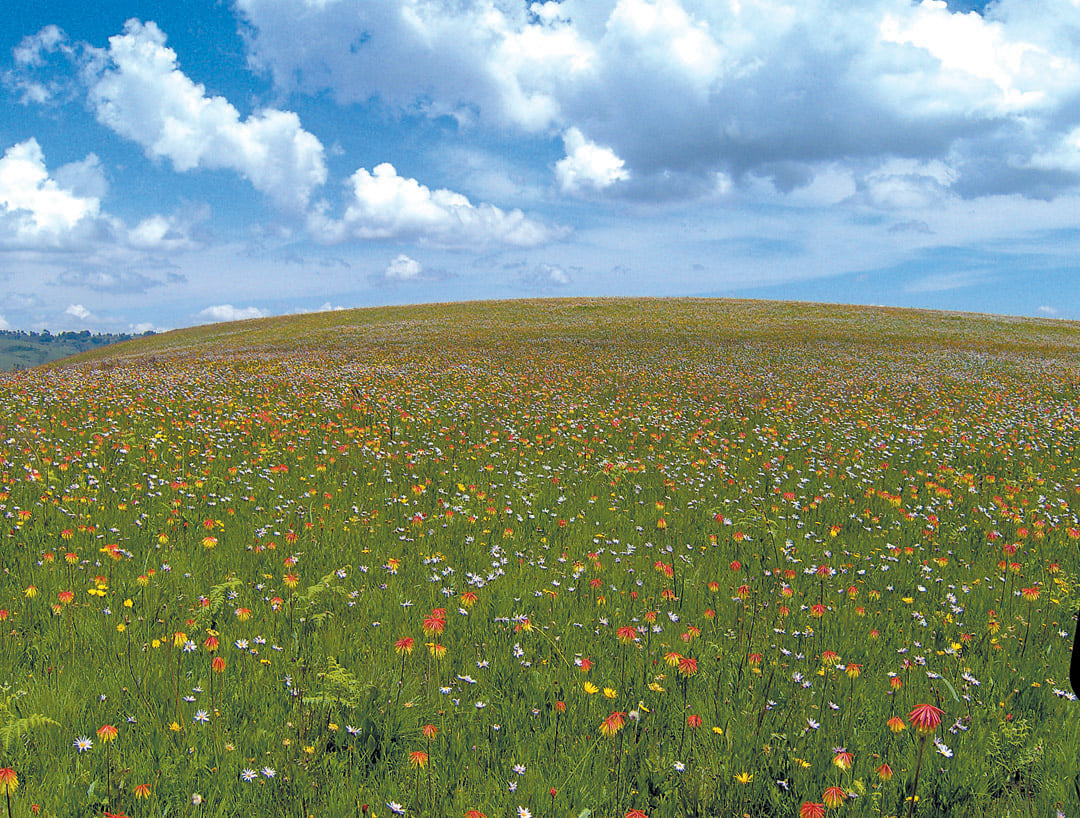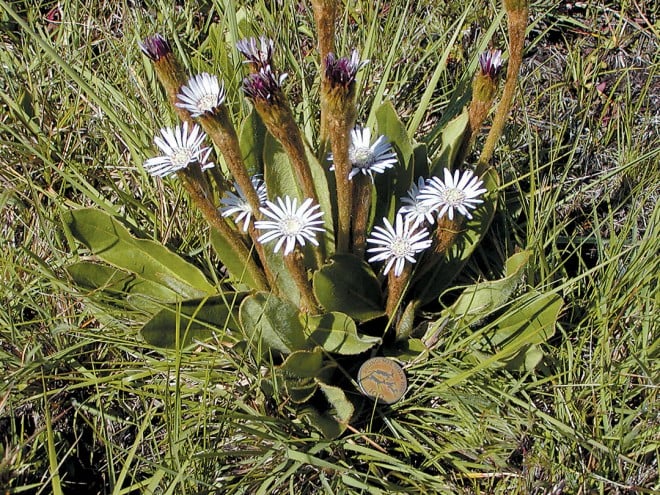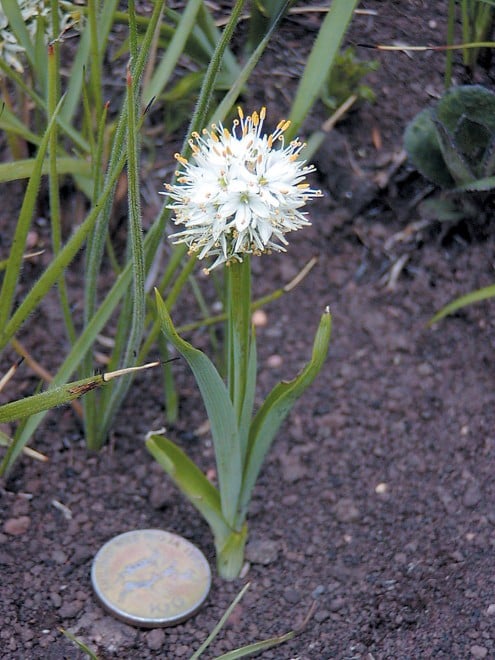
Kitulo Plateau: The Garden of God

Contributor

A West Coast horticulturist travels to a distant land to see an array of captivating plants, some familiar and some not so.
High above Tanzania’s tropical lowlands lies a little-known botanical wonderland: Kitulo Plateau. Officially established as part of the Tanzania National Park (TANAPA) system in 2004, it is home to 350 species of plants and serves as an important water catchment basin for the region. The only botanical reserve in tropical Africa, the plateau showcases forty-five terrestrial orchid species during the rainy season from late November through April. The locals refer to Kitulo Plateau as Bustani ya Mungu—The Garden of God.
My husband Eldon and I decided to visit his sister in Tanzania, while she was working on a year-long assignment with a water sanitation organization. I had always wanted to explore the botanical treasures of South Africa, but that proved too distant for our short visit. Researching our options, Eldon discovered Kitulo, described as the “Serengeti of plants.” Since we planned a game safari to the Serengeti, a botanical counterpart seemed appropriate.
From Dar es Salaam, we boarded the TAZARA (Tanzania-Zambia Railway Authority) train without our Kitulo plans completely confirmed. We wanted the adventure of the day-long train ride through the Selous Game Reserve, where we saw elephants, giraffes, and warthogs. At each station we pulled into, locals sold us soap, mangoes, and grilled plantains through the windows.
When we arrived in Mbeya, our tall, lanky guide, Niko Ntinda, from the tour office was waiting for us. It was another hour’s drive to Chamala, where Zabron Solloo, the outreach program warden for Kitulo, and Renatus John, our driver, picked us up in an official TANAPA Toyota Land Cruiser. Fifty-two hair-pin turns later, we settled into a small village, Matamba, our home base for the plateau. It was dinnertime by now. We would have to wait until morning to see the plateau.

Two Intense Days
At 8,500 feet, the plateau felt like a spring day in Seattle compared to Tanzania’s tropical lowland heat and humidity. “We are at your disposal,” Solloo announced warmly with his round face and twinkling eyes. “Just tell us to stop when you see something interesting.” Not more than two minutes later, I spotted my first red hot poker (Kniphofia). Next to it was a fairy wand (Dierama) nodding in the breeze. I snapped a few photographs, and we were off again to find the next treasure. Our vehicle slowed as we approached the park’s entrance, marked by a hand-painted sign of the plateau’s signature orchid fields and Tanzania’s rare bird, the Denham’s bustard.
As we drove further into the park, red hot pokers became more numerous. The sight took my breath away. In Swahili, serengeti means “endless plain,” and here were endless rolling hills with thousands of red hot pokers, orchids, and so many other plants reaching out into a bright blue horizon with puffy clouds. With no formal trail system, I tried my best to tiptoe around the plants, but it was pointless. Renatus turned the car into one of the fields, putting us in the middle of oranges, yellows, and pinks. I felt like Dorothy in the poppy fields on her way to Oz.

I had seen many of the plants before, or at least thought I had—a white scabious-like Cephalaria goetzei, blue forget-me-nots (Myosotis), Geranium—yet so many were totally unfamiliar. I snapped away with two cameras, hoping to identify them at home with the help of a field guide. Solloo was an excellent birder but not a botanist. He took interest in the plants I photographed. On that first day, I was able to identify Beccium (mint family, Lamiaceae), Gerbera piloselloides, Cycnium adonense (snapdragon family, Scrophulariaceae), Satyrium and Disa (orchid family, Orchidaceae), several types of Gladiolus, and countless bulbs, ferns, and grasses.
During dinner that evening, Solloo was eager to learn the plants we had photographed. He printed black and white copies, and I helped him identify what I could, giving him common and scientific names. In return, they taught us more Swahili over beers at the local pub.
The second day’s goal was hiking to the top of the plateau. I continued to scour the grasslands for eye-catching plants. An all-red Kniphofia (possibly K. nelsonii) flanked streams, and aloes were just starting to bloom. As we climbed higher, the plants became scrubbier. Protea and Gnidia were abundant, along with a sulfur-yellow Hypoxis, starry Wurmbea, and bright white Ornithogalum.

On both days, Renatus carried our lunchboxes of traditional flatbread, baked chicken, fruit, tea, and water in a large duffel bag. We found a rock outcropping for our picnic lunch and enjoyed the sunshine. As we finished, clouds loomed in the distance. We packed up and hustled to the top. Big thick raindrops fell, on cue, as we crested the summit and took in the view. Thunder and lightning followed. We were soaked by the time we reached the car—our raingear waiting inside.

Conservation
We had spotted a group of locals from the Wanyakyusa tribe on our drive into the park on day one. They hike half a day from the Livingstone Mountains to Matamba to sell avocados, mangoes, and pumpkin greens. Solloo asked if we wanted to buy their produce, and we eagerly agreed. We exchanged a tense moment as Renatus slowed the vehicle towards them. Swahili was flying back and forth between the two sides. Eldon and I were completely confused. Once Renatus explained that we wanted to buy fruit, everyone sighed with relief. Solloo explained to us later that the tribes people thought they were being accused of orchid poaching, an ongoing problem in the plateau.
Although orchids are typically poached for their beauty, here they are poached by locals for their tubers, which are ground into a meatless sausage and sold as a delicacy in nearby Zambia. Burning large swaths of grassland helps the poachers find the inconspicuous tubers once they’ve broken dormancy; the poachers dig them up with machetes. Such activities threaten Tanzania’s largest and most important montane grassland communities.
Other poaching activities include hunting small animals and logging for charcoal, timber, and firewood. Such activities now occur on a smaller scale since Kitulo’s inclusion in the TANAPA park system. Through expansion of tourism and conservation, it’s possible to decrease this unsustainable harvesting even further. The next time a botanical exploration leads you to Africa, make a point to visit Kitulo Plateau. You won’t be disappointed.
Share:
Social Media
Garden Futurist Podcast
Most Popular
Videos
Topics
Related Posts

Low Maintenance Gardens – Better for Pollinators and People
Autumn 2022 “I come out every day. It’s therapy, my meditation.” Janet’s young garden transformed from overgrown, invasive plants to mostly natives. The dailiness of

Calochortophilia: A Californian’s Love Affair with a Genus
Summer 2022 I can chart the progression of my life by Calochortus. For the last two decades, at least. As a teenage girl growing up

Pacific Plant People: Carol Bornstein
Spring 2022 Public gardens play a key role in demonstrating naturalistic planting design, selecting native and adapted plants for habitat, and testing techniques for reducing

Add Year-Round Interest and Winter Blooms for Pollinators
Spring 2022 This article was created from an Interview by Merrill Jensen with Neil Bell in the Summer of 2021 for our Pacific Plant People










Responses